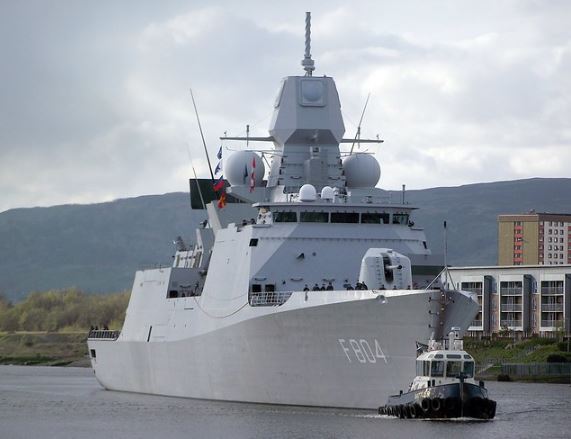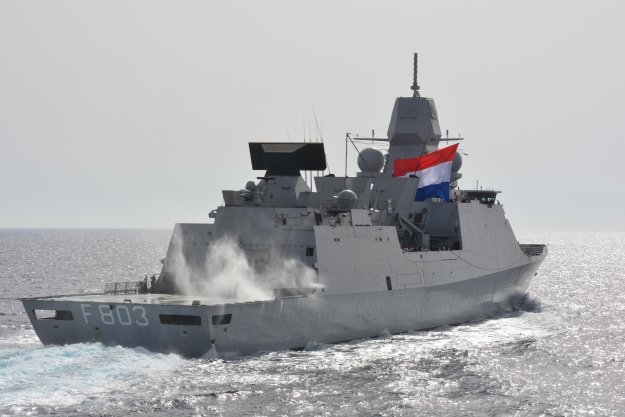Royal Schelde has built four De Zeven Provincien Class guided missile carrying fast frigates for the Royal Netherlands Navy. The air defence and command (LCF) frigates were built at Royal Schelde’s Flushing shipyard. They replaced Tromp Class and Jacob van Heesmarck Class frigates.
The first of class, HNLMS De Zeven Provincien (F802), was commissioned in April 2002. HNLMS Tromp (F803) was commissioned in March 2003, HNLMS De Ruyter (F804) in April 2004 and HNLMS Evertsen (F805) in June 2005.

wikipedia.org
In December 2003, HNLMS De Zeven Provincien became the first vessel to successfully fire the evolved Sea Sparrow missile (ESSM) and Standard missile SM2-MR block IIIA using interrupted and continuous wave illumination and X-band uplinks. Both missiles were controlled by the APAR radar.
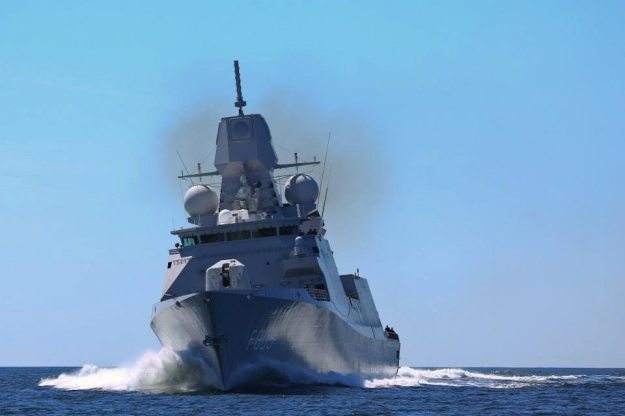
HNLMS Evertsen (F805) – WarshipPorn
In December 2006, HNLMS Tromp participated in tactical ballistic missile defence (TBMD) tests with the US Navy. The ship, fitted with a Thales SMART-L radar with a new extended long-range mode, was able to detect and track targets representing tactical ballistic missiles.
In November 2008, HNLMS De Zeven Provincien completed its first test launches of the Boeing Harpoon missile, off the coast of Virginia, USA.
Trilateral frigate agreement
The Netherlands, Germany and Spain set up the trilateral frigate agreement for the national construction of frigates. In addition to the De Zeven Provincien, the F100 (Alvaro de Bazan) is being built in Spain by Navantia and the F124 (Sachsen) built in Germany by ARGE F124 (Blohme and Voss, HDW and Thyssen Nordseewerke). The cooperation extends to the ship platform and not to the systems.
Stealth-orientated frigate design
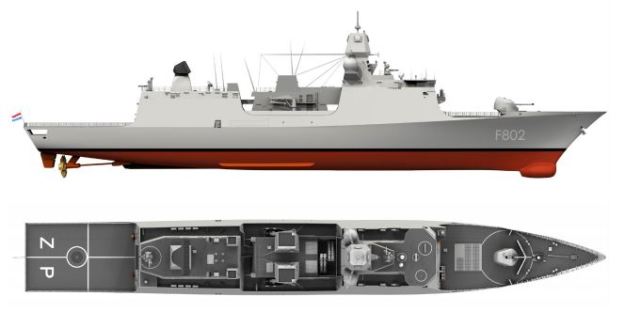
damen.com
The design of the ship incorporates stealth features with an emphasis on the reduction of radar cross section, infrared, acoustic, electrical and magnetic signatures.
Watertight compartments, insulation, redundancy of vital systems, power distribution, and routing, blast and fragmentation retaining structures provide a very high level of survivability against missile attack and fire hazards. For nuclear chemical and biological warfare protection the ship is subdivided into two gas citadels and a sub citadel.
SEWACO XI combat data command system
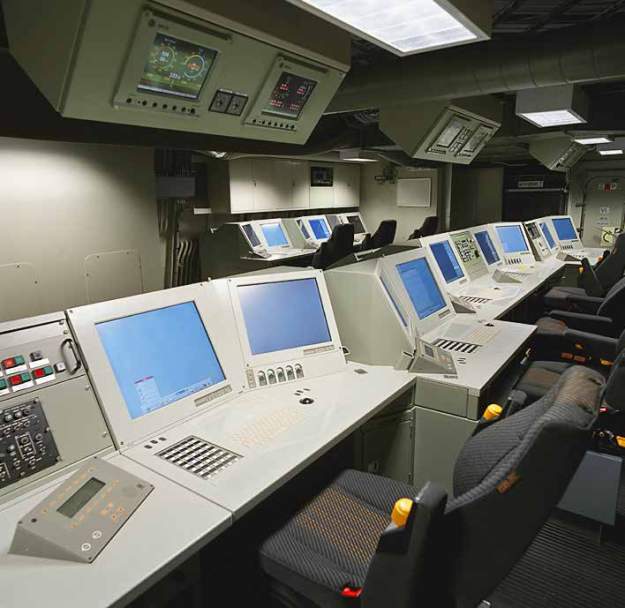
The ship is equipped with the SEWACO XI combat data system developed by Thales Naval Nederland. The RNIN’s Centre for the Automation of Weapon and Command Systems (CAWCS) has developed the software. The system will use asynchronous transfer mode (ATM) network architecture.
The Rohde & Schwarz communications suite includes secure voice and data satellite communications, Link 11 and Link 16.
ESSM and SM2-MR block IIIA surface-to-air missile systems
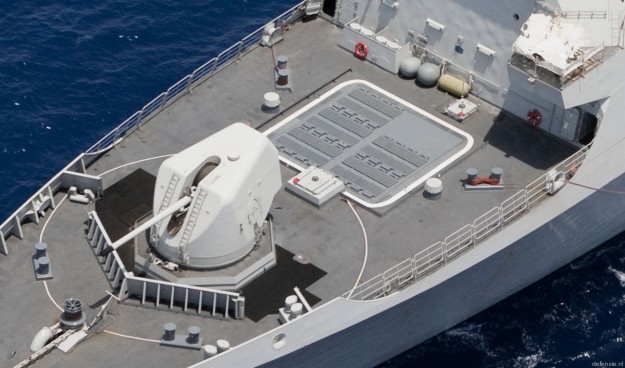
defensle.nl
The long-range surface-to-air missile system is the evolved Sea Sparrow missile (ESSM) developed by an international team led by Raytheon Missile Systems that has semi-active radar guidance with tail control motor to improve range, speed and manoeuvrability.
The ship’s medium-range anti-air missile is the Raytheon Standard missile SM2-MR block IIIA. SM-2MR has a range of 70km, a speed of Mach 2.5 and has semi-active radar seeker and an Aegis radio command link.
Evolved Sea Sparrow missile (ESSM)
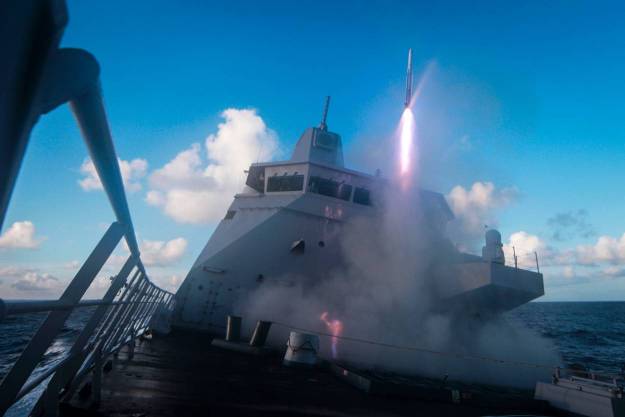
defensle.nl
The RIM-162 Evolved Seasparrow Missile (ESSM) is a short-range air defense interceptor designed to defend naval vessels against anti ship cruise missiles. ESSM is the latest missile developed with international cooperation by the NATO Seasparrow consortium nations. The ESSM works in concert with other air defense interceptors, such as Standard Missile-2 and Standard Missile-6 to provide naval vessels with a layered defense.
Basing: Ship-launched
Class: Surface-to-air missile
Length: 3.64 m
Diameter: 0.254m
Range: 50 km
Guidance: inertial, semi-active radar
Propulsion: Solid propellant
Speed: Mach 4
Status: Operational
In Service: 2004
Source missilethreat.csis.org
Standard missile SM2-MR block IIIA
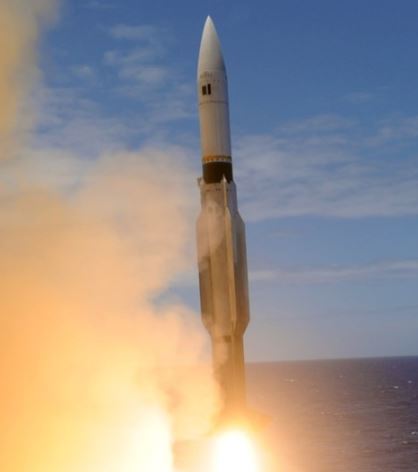
seaforces.org
The Standard Missile-2 (SM-2) is a fleet-area air defense weapon that provides anti-air warfare and limited anti-surface warfare capability against today’s advanced anti-ship missiles and aircraft. With a range of 90 nautical miles and an altitude of 65,000 feet, the SM-2 is an integral part of layered defense that protects naval assets, giving warfighters greater operational flexibility.
The SM-2 is a solid propellant-fueled, tail-controlled, surface-to-air missile fired by surface ships. Designed to counter high-speed, high-altitude anti-ship cruise missiles (ASCMs) in an advanced ECM environment, its primary mode of target engagement uses mid-course guidance with radar illumination of the target by the ship for missile homing during the terminal phase. The SM-2 can also be used against surface targets.
SM-2 Block IIIA The medium range Block IIIA increases SM-2 capabilities at even lower altitudes than the Block III and includes a new warhead that enhances the velocity of warhead fragments moving in the direction of the target. Source missiledefenseadvocacy.org
Number of Stages: 1
Dimensions
Diameter: 340 millimeter (13.4 inch)
Length: 4.72 meter (186 inch)
Wingspan: 920 millimeter (36.2 inch)
Performance
Max Range: 160 kilometer (86 nautical mile)
Target’s Max Altitude: 20,000 meter (10.8 nautical mile)
Speed
Top Speed: 3.50 mach (4,184 kph)
Weight
Weight: 706 kilogram (1,556 pound)
Source deagel.com
Both ESSM and SM2 are fired from a 40-cell mk41 vertical launch system (VLS). The five octuple launchers are installed with the caps almost flush with the surface of the bow deck behind the main gun.
The Boeing Harpoon surface-to-surface missile system is installed on the raised deck immediately behind the main mast.
Harpoon is a medium-range missile with a range of 120km, a 220kg warhead and active radar terminal guidance.
Harpoon surface-to-surface missile system
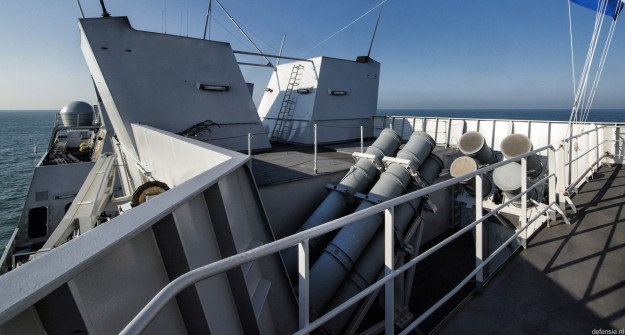
defensle.nl
Description
The A/U/RGM-84 Harpoon is an all- weather, over-the-horizon, anti-ship missile system that provides the Navy with a common missile for air and ship launches.
Features
The Harpoon s active radar guidance, warhead design, low-level cruise trajectory, and terminal mode sea-skim or pop-up maneuvers assure high survivability and effectiveness. The missile is capable of being launched from surface ships, submarines, shore batteries, or aircraft (without the booster).
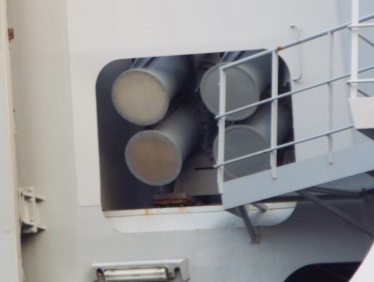
wargamingmiscellanybackup.wordpress.com
In late 2010, plans for an updated U.S. Navy version of the Harpoon Block II began to formalize. The Harpoon Block II+ provides a rapid-capability enhancement for the Navy that includes a new GPS guidance kit, reliability and survivability of the weapon, a new data link interface that enables in-flight updates, improved target selectivity, an abort option and enhanced resistance to electronic countermeasures. When fielded to the fleet in the fourth quarter of Fiscal Year 2017, Harpoon Block II+ will join the Joint Standoff Weapon C-1 as the Navy s only two air-to-ground network-enabled weapons.
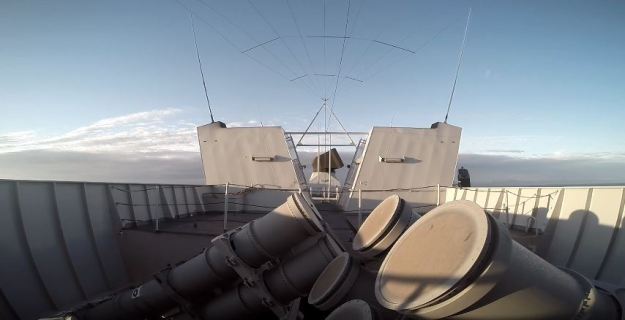
HNLMS De Ruyter (F804) – Ministerie van Defensie
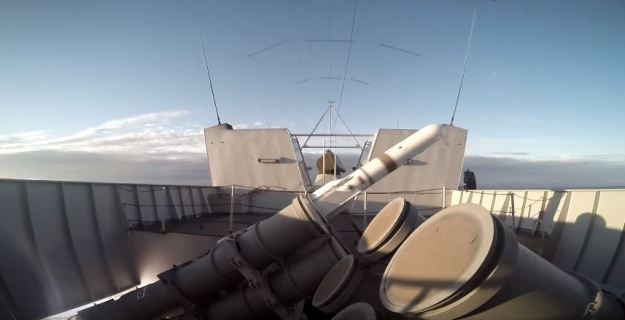
HNLMS De Ruyter (F804) – Ministerie van Defensie
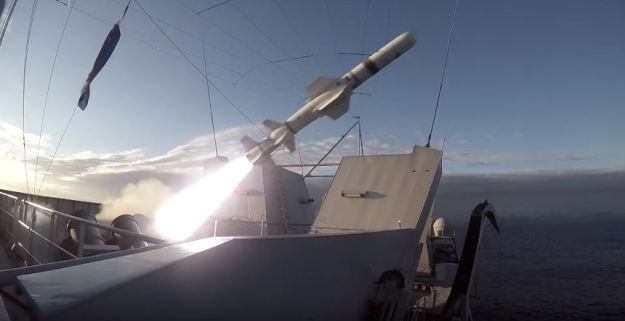
HNLMS De Ruyter (F804) – Ministerie van Defensie
| General Characteristics |
| Primary Function: Air, ship, and foreign submarine and land-based coastal defense battery launched anti-ship cruise missile. |
| Contractor: The Boeing Company. |
| Date Deployed: 1977. |
| Unit Cost: $1,200,000 for Harpoon Block II. |
| Propulsion: Teledyne Turbojet / solid propellant booster for surface and submarine launch. Thrust: greater than 600 pounds (greater than 272.2 kg). |
| Length: Air launched: 12 feet, 7 inches (3.8 meters); Surface and submarine launched: 15 feet (4.6 meters) |
| Diameter: 13.5 inches (34.3 cm). |
| Wingspan: 3 feet (91.4 cm) with booster fins and wings. |
| Weight: 1,523 pounds (690.8 kg) with booster. |
| Speed: High subsonic. |
| Range: Over-the-horizon, in excess of 67 nautical miles (124 km). |
| Guidance System: Sea-skimming cruise monitored by radar altimeter / active radar terminal homing. |
| Warhead: Penetration / high-explosive blast (488 pounds/224 kg). |
Source navy.mil
In November 2005, RNLN announced plans to acquire 30 Tomahawk block IV (Tactical Tomahawk) land attack missiles were approved. However in May 2007, the planned procurement was cancelled.
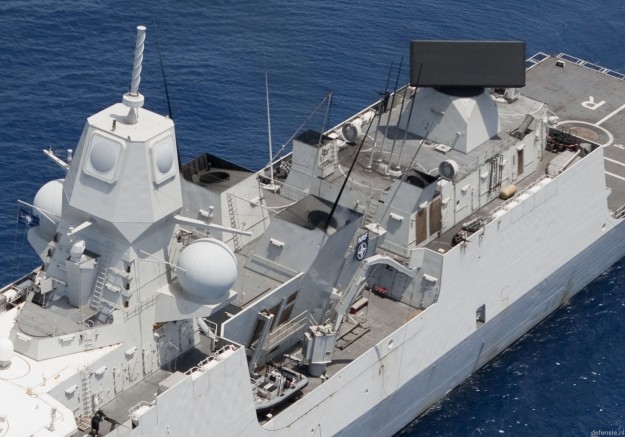
defensle.nl
Guns
The ship’s main gun on the bow deck is a 127mm / 54-calibre Oto Melara gun. Two Thales Naval Nederland Goalkeeper close-in weapon systems are installed, one on the raised deck in front of the main mast and one facing the stern on the raised deck overlooking the helicopter landing deck. Goalkeeper’s Gatling principle 30mm gun provides a maximum firing rate of 4,200 rounds a minute with a range of 1,500m.
127mm / 54-calibre Oto Melara gun
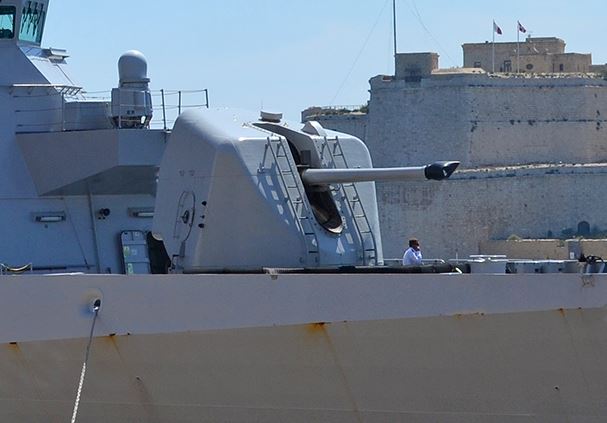
HNLMS De Zeven Provincien (F802)
Manufactured by OTO-Melara, these weapons have a higher rate of fire and a greater maximum elevation than their rough equivalent, the USA 5″/54 (12.7 cm) Mark 45. Both use USN standard semi-fixed ammunition including surface, air, pyrotechnic and chaff rounds. Mounting reaction time is five seconds from target designation. The reloading, feeding and firing sequence is controlled by a central console which is operated by a single crewmember.
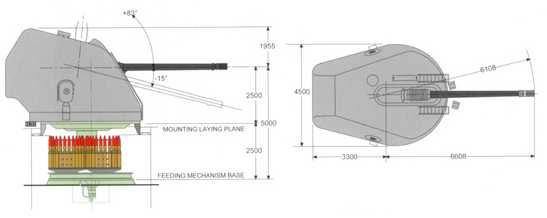
OTO-Melara
The Compact is intended for use on frigate and destroyer type warships. This mounting uses a water-cooled barrel mounted in a water-tight fiberglass gunhouse and has 66 ready-to-fire rounds in three drums located just below the gun house. Each drum can hold a different ammunition type and each can be independently selected. A central elevator hoists the ammunition and delivers it to two oscillating arms which move the rounds into the loading trays. The drums are automatically reloaded via two hoists which are manually loaded in the lower magazine. Reloading can take place while the gun is firing. As an option, this mounting can be fitted with a stabilized line of sight local control system.
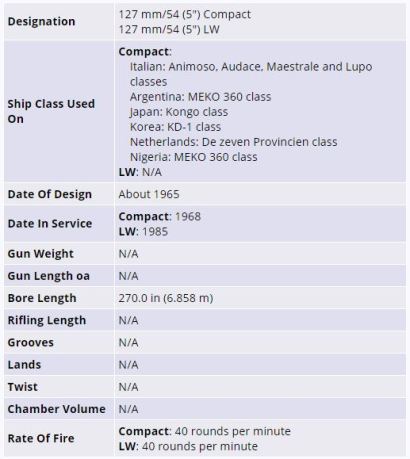
The LW (for “Light Weight”) is a simpler version intended for smaller ships such as corvettes. This mounting uses selectable dual ammunition feed and modular magazines with a minimum of twenty ready rounds. Three modular automatic feeding magazines are used, one for propelling charges and two for projectiles. This permits this mounting to fire two different and immediately selectable types of ammunition. The magazines can be reloaded while the gun is firing. Projectiles and propelling charges are hoisted separately to the gun level from below-deck feeding magazines. There is a composition station below the gun where the next round to be fired is selected just before it is taken up by the gun automatic loading system.
Both mountings use a water-cooled barrel, normally using sea water, but requiring fresh water for flushing after firing. Source navweaps.com
Two close-in Oerlikon 20mm machine guns are installed, one to port and one to starboard of the main mast.
Goalkeeper close-in weapon systems
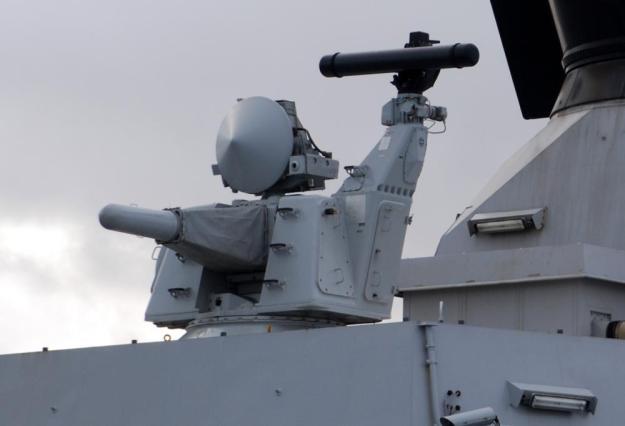
The Goalkeeper Close-In Weapons System (CIWS) is a ship-mounted short-range air defense system (SHORAD) that combines a 30 mm, 7-barrel Gatling gun (GAU-8 Avenger) with special missile-piercing ammunition in order to protect vessels from incoming missiles.[i] Being a CIWS (“sea-whiz”), the Goalkeeper is intended to be the last line of defense against projectiles that have successfully evaded other defenses. It is currently used by the naval forces of Belgium, Chile, the Netherlands, Portugal, Qatar, South Korea, the UAE and the UK.[ii] The system is completely autonomous, being able to engage in surveillance, detection, destruction, and then select the next priority target on its own. The Goalkeeper can fire up to 4,200 solid tungsten sabot rounds per minute from its GAU-8 Avenger cannon. Specifically, the Goalkeeper uses missile-piercing discarding sabots (MPDS) and frangible missile-piercing discarding sabots (FMPDS) made from Tungsten alloy.
The Goalkeeper has also proven its effectiveness in practice; the United States tested the weapon by firing three separate missiles in the system’s range- all were intercepted.[iii] An I-band radar is utilized to ensure all-weather detection capability and pin-point target tracking is accomplished with a dual frequency I/K-band tracking radar.
Quick Facts
| Variants | N/A |
| Role and Mobility | Short-Range Air Defense, Air Surveillance and Detection; Ship-Mobile |
| Interceptors and Range | 30mm, 7-barrel Gatling Gun:4200 rounds/min
Maximum Effective Range: 2000 km |
| Sensors | I-Band Search RadarDual Frequency Tracking System |
| Targets | Highly Maneuverable Missiles, Aircraft, and Fast Maneuvering Surface Vessels |
| Status/Exports | Operational; Netherlands, Belgium, Chile, Portugal, Qatar, and the UAE |
| Designer/Producer | Thales Group |
Source missiledefenseadvocacy.org
2 x Oerlikon 20mm machine gun
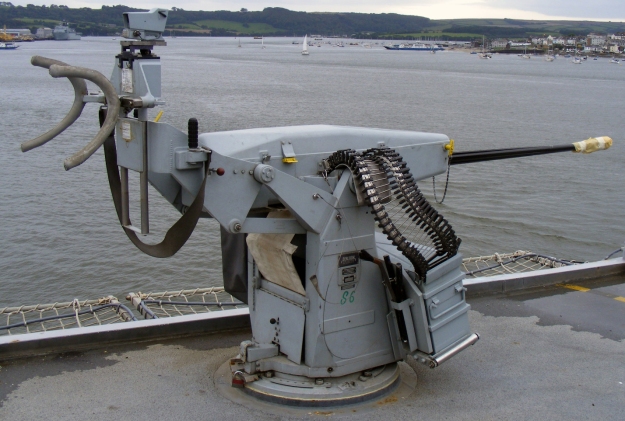
Twin mk32 and mod 9 323mm torpedo launchers
Two mk32 mod 9 323mm twin torpedo launchers are fitted one on each side of the ship at about two-thirds the length of the ship from the bow. 24 mk46 mod 5 torpedoes are stored in the ship’s magazine.
Mk-46 torpedo
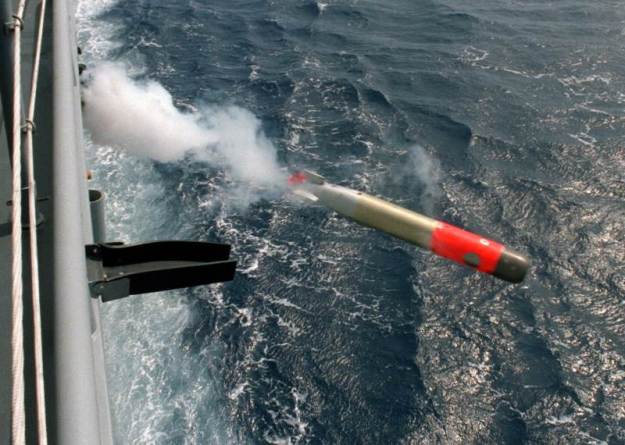
seaforces.org
The MK 46 torpedo, first introduced in 1965, is a surface ship and aircraft-launched anti-submarine weapon. It is presently identified as the NATO standard and has been acquired by more than 25 countries. Various modifications, including improved acoustics, guidance and control upgrades, and countermeasure-detection capability have been introduced into the weapon.
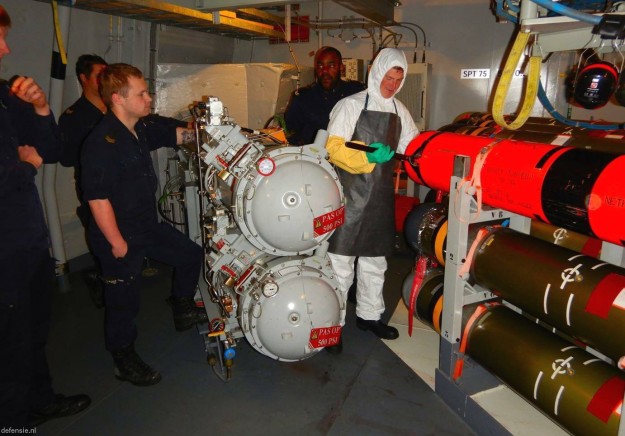
defensle.nl
The current version of the MK 46 is the dual-speed, active or active/passive Mod 5A (S). The Navy introduced the MK 46 Mod 5A (SW) Service Life Extension Program (SLEP) torpedo in September 1996 which boasts improved counter-countermeasure performance, enhanced target acquisition, provides a bottom-avoidance preset, and improved maintainability and reliability. The MK 46 Mod 5A (SW) also serves as the payload for the Vertical Launch Anti-Submarine Rocket (ASROC) (VLA). Source navy.mil
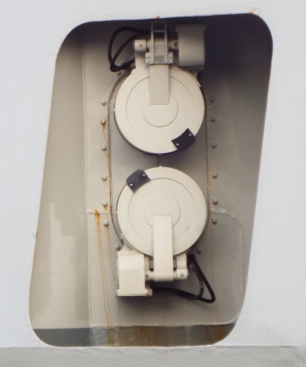
2 × twin Mk.32 Mod 9 torpedo launchers – wargamingmiscellanybackup.wordpress.com
General characteristics, Mark 46 Mod 5:
Primary Function: Air and ship-launched lightweight torpedo
Contractor: Alliant Techsystems
Power Plant: Two-speed, reciprocating external combustion; Mono-propellant (Otto fuel II)
Length: 8 ft 6 in (2.59 m) tube launch configuration (from ship), 14 ft 9 in (4.5 m) with ASROC rocket booster
Weight: 508 lb (231 kg) (warshot configuration)
Diameter: 12.75 in (324 mm)
Range: 12,000 yd (11 km)
Depth: > 1,200 ft (365 m)
Speed: > 40 knots (46 mph, 74 km/h)
Guidance System: Homing mode: Active or passive/active acoustic homing
Launch/search mode: Snake or circle search
Warhead: 96.8 lb (44 kg) of PBXN-103 high explosive (bulk charge)
Date Deployed: 1967 (Mod 0); 1979 (Mod 5)
Source seaforces.org
De Zeven Provincien Class countermeasures
The frigates are fitted with the Thales Defence Sabre integrated electronic warfare system which includes a 0.5GHz to 18GHz electronic support measures (ESM) system and a 7.5GHz to 18GHz active phased-array electronic countermeasures (ECM) system.
Sabre integrated electronic warfare system
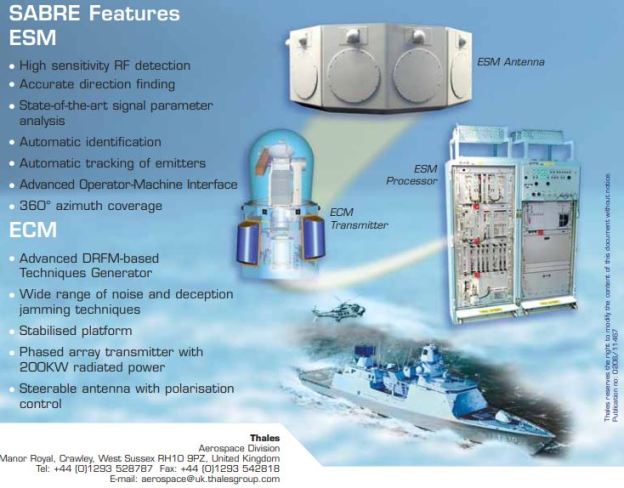
thales7seas.com
The ship has four launchers for the SRBOC (super rapid blooming off-board countermeasures) decoy system from Lockheed Martin Sippican. The towed torpedo decoy is the Argon ST (formerly Sensytech) AN/SLQ-25 Nixie.
SRBOC (super rapid blooming off-board countermeasures)
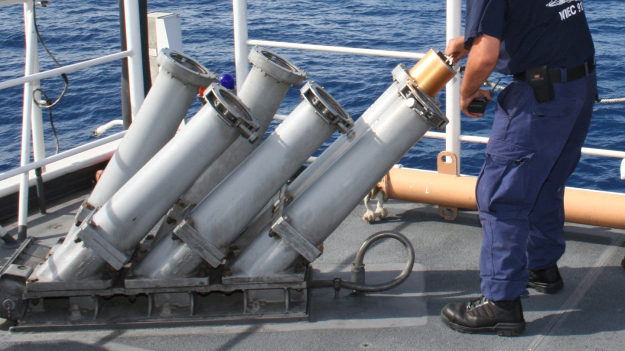
Decoy employment is used primarily to defend against anti-ship missiles which have avoided detection and penetrated to the terminal-defense area that represents an imminent threat to ownship. The MK 36 Super Rapid Bloom Offboard Countermeasures (SRBOC) Chaff and Decoy Launching System is an evolutionary development of the RBOC family with enhanced capability. The MK 36 is a deck-mounted, mortar-type countermeasure system that may be used to launch an array of chaff cartridges against a variety of threats. The purpose of the system is to confuse hostile missile guidance and fire control systems by creating false signals. The launching system is controlled from the Combat Information Center and is dependent on information provided by the detection and threat analysis equipment on the ship. Source fas.org
Argon ST (formerly Sensytech) AN/SLQ-25 Nixie
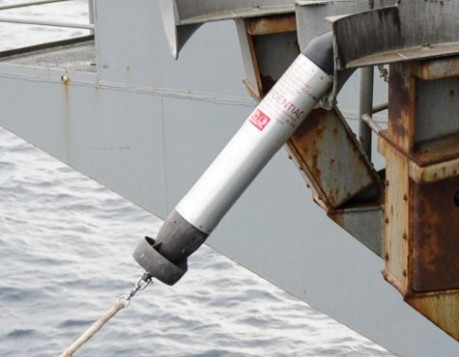
The Torpedo Countermeasures Transmitting Set AN/SLQ-25A, commonly referred to as Nixie, is a passive, electro-acoustic decoy system used to provide deceptive countermeasures against acoustic homing torpedoes. The AN/SLQ-25A employs an underwater acoustic projector housed in a streamlined body which is towed astern on a combination tow/signal-transfer coaxial cable. An onboard generated signal is used by the towed body to produce an acoustic signal to decoy the hostile torpedo away from the ship. The AN/SLQ-25A includes improved deceptive countermeasures capabilities. The AN/SLQ-25B includes improved deceptive countermeasures capabilities, a fiber optic display LAN, a torpedo alertment capability and a towed array sensor. Source fas.org
| GENERAL DATA: | |
|---|---|
| Type: Decoy (Towed) | Weight: 21.0 kg |
| Length: 0.94 m | Span: 0.187 m |
| Diameter: 0.152 | Generation: Late 1970s |
| Targets: Surface Vessel |
| WEAPONS: |
|---|
| AN/SLQ-25 Nixie – Decoy (Towed) Surface Max: 1.9 km. |
Source cmano-db.com
Helicopters and flight deck
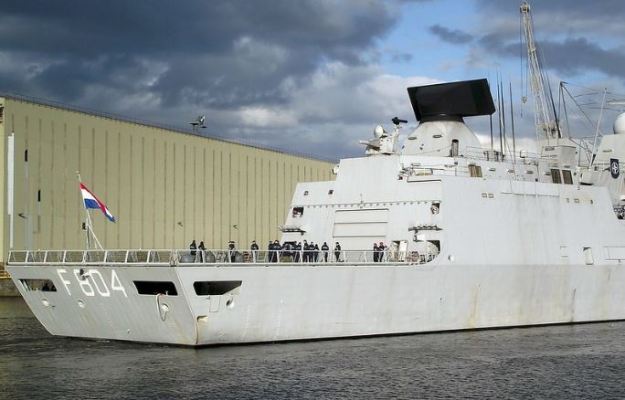
Robert Wilson @flickr
There is a 27m flight deck at the stern of the ship and a hangar with accommodation for a single helicopter such as the AgustaWestland Lynx of the Royal Netherlands Navy, or the 10t NH90 naval helicopter which entered service in 2010.
The deck is fitted with the DCN Samahe helicopter handling system which allows deployment and recovery of the Lynx or NH90 helicopter in high sea states. The ship’s helicopter direction system is the VESTA.
Sensor systems
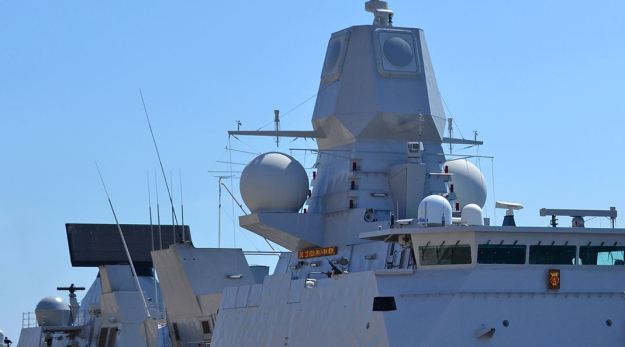
HNLMS De Zeven Provincien (F802)
The ship’s radar suite was supplied by Thales Naval Nederland. The Smart-L three dimensional radar operating in D band provides air search. APAR (active phased array radar) provides air and surface search and weapon fire control. APAR is a multi-function radar operating at X-band. It provides target search and tracking and guidance for the Standard missile 2. The Scout LPI (low probability of intercept) radar operating at I band provides surface search. There is also a mkXII identification friend or foe (IFF) radar.
APAR (active phased array radar)
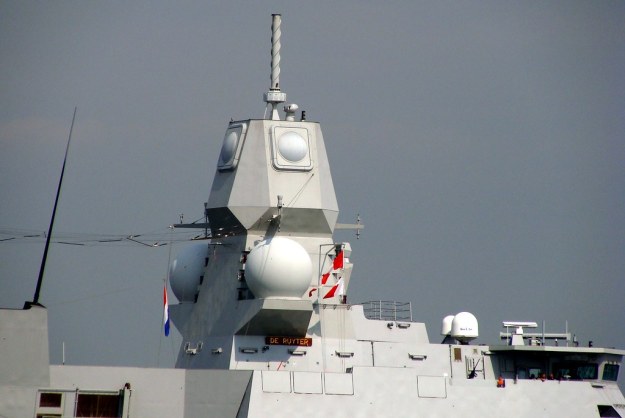
HNLMS De Ruyter (F804) – arnekiel (flickr)
The Active Phased Array Radar (APAR) is a shipborne multifunction three-dimensional (3D) radar, making it the first naval Active Electronically Scanned Array (AESA) radar. APAR has four fixed sensor arrays fixed on a pyramidal structure providing air and surface target tracking, horizon search, limited volume search, and missile guidance for the ships where it is deployed. Currently, APAR is operational on the four “De Zeven Provincien” class frigates of the Royal Netherlands Navy, three “Sachsen” class frigates of the German Navy, and three Patrol Ships of the Iver Huitfeldt class of the Danish Navy.
Quick Facts
| Role and Mobility | Air and Surface Target Tracking, Horizon Search, Volume Search, Surface Naval Gunfire Support, and Missile Guidance; Ship-Mobile |
| Frequency | X-Band |
| Range | 150 km |
| Air Defense Interceptor Systems | Evolved Sea Sparrow Missile (ESSM) and SM-2 Block IIA Missile |
| Targets | Supersonic High-Divers, Supersonic Sea Skimmers, and Stealth Targets |
| Status/Exports | Operational; Germany, Denmark, and Canada |
| Producer | Thales Nederland |
Source missiledefenseadvocacy.org
In April 2006, the Dutch government placed an order for four Thales Naval Nederland Sirius LR-IRST long-range dual-band infrared search and track systems for the vessels. Sirius was installed on top of the mast tower. The system provides horizon search capability against sea-skimming missiles. Thales Mirador electro-optic surface surveillance system is also fitted.
Scout Mk.1 Radar
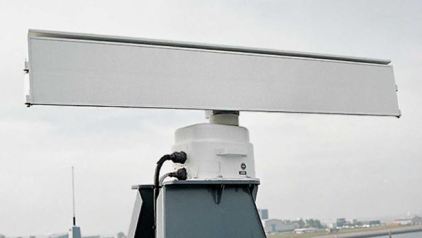
The Thales Scout is a Low Probability of Intercept (LPI) short-to-medium range surface surveillance and tactical navigation radar. The Radar operates in J-Band on the Frequency Modulated Continuous Wave (FMCW) principle and therefore has an extremely low output power. The dual array antenna of Scout guarantees optimal isolation between the receive and transmit path, which is essential for good long-range performance of an FMCW radar. The transmitter and the receivers are located behind the antenna to prevent unnecessary losses in long waveguide runs. This also ensures ease of installation. The connection to the below deck equipment is made by a single, thin cable. The system can be operated remotely (radio or line connection).
Scout detects targets in adverse sea clutter conditions, thanks to its very small range cell size. The radar signal processor uses 3641 range cells. The system is also very suitable for coastal surveillance. Source radartutorial.eu
| GENERAL DATA: | |
|---|---|
| Type: Radar | Altitude Max: 0 m |
| Range Max: 44.4 km | Altitude Min: 0 m |
| Range Min: 0.4 km | Generation: Late 1990s |
| Properties: Pulse-only Radar |
| SENSORS / EW: |
|---|
| Scout Mk.1 – Radar Role: Radar, Surface Search & Navigation Max Range: 44.4 km |
Source cmano-db.com
Sirius LR-IRST
Thales Naval Nederland Sirius LR-IRST long-range dual-band infrared search and track systems This is a high-powered Infra Red surveillance system. It is very useful for locating sea-skimming missiles. It is designed and build by Thales. Sirius is a dual-band IR detection and tracking sensor with an 8-12 micron and a 3-5 micron IR camera on a pedestal. The former has a window which elevates to 14 degrees and the latter a window which elevates to 3 degrees. Scan rate is 53 rpm and an airplane can be detected at up to 15km, a missile at up to 12km. The system can carry over 500 tracks and provides automatic alerts on the 32 most threatening tracks with a false alarm rate of less than 1/hr. SIRIUS provides data directly to the SEWACO Combat Data System as digital data to the databus and video to the video bus. Each band can be processed separately providing three different outputs – each band individually or a combined output.
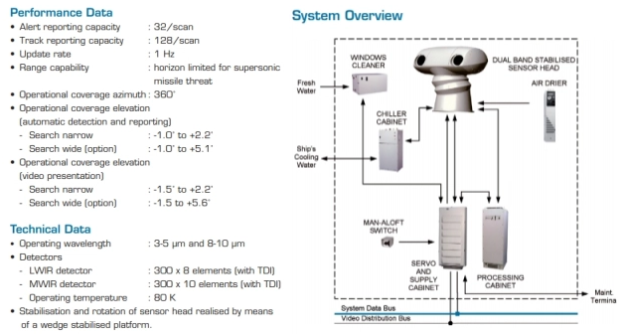
Source: thalesgroup.com
Thales Mirador electro-optic surface surveillance system
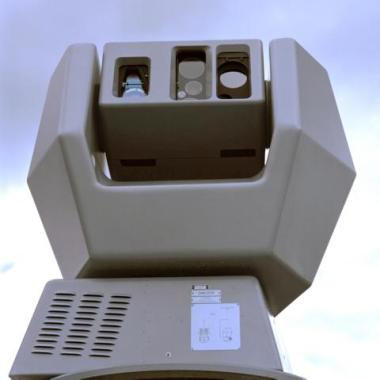
Thales Mirador electro-optic surface surveillance system This is a high-powered Optical and Infra Red surveillance system. Mounted on the APAR mast, it is designed and build by Thales. Unlike Sirius, which is an IR-only system which functions in a continuous scanning mode, Mirador is a combined Optical/IR system, which will be used to help the crew to detect, identify and observe targets. The main sensor of the Mirador is the ALBATROSS infrared camera, which is a 3rd generation Focal Plane Array camera made by Thales. The Mirador array will be fully integrated into the SEWACO system, and can be used to provide targeting data to the system.
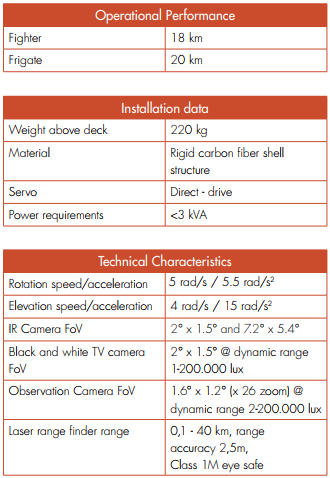
Mirador can operate in a air search mode and in a automatic tracking mode, as well as be directed to observe targets from any workstation on the bridge and C&C. Mirador has been mainly added to the ADCF to improve target acquisition and recognition during brown water operations, but will also be of help with navigational tasks, especially in bad weather conditions when visibility is poor.
Main features
- Optimal combination of surveillance and tracking characteristics due to an extensive optronic sensor suite, comprising colour TV camera, fixed-focus TV camera, IR camera, and an eye-safe laser range finder.
- Very fast engagement sequence thanks to:
-
- direct drive brushless servo system,
- auto-acquisition algorithms.
- Stealthy design.
- Operational features:
- naval gunfire support,
- splash spotting.
Source: thalesgroup.com
Smart-L three dimensional radar
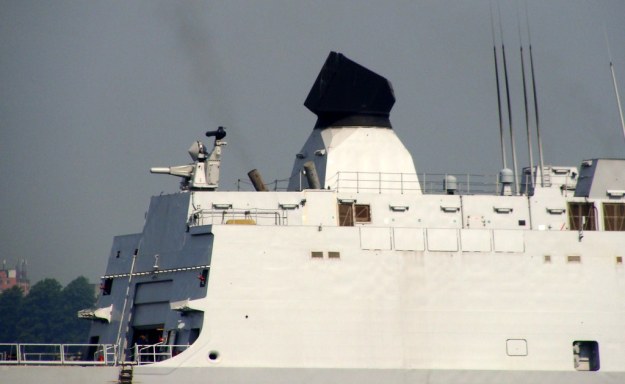
arnekiel (flickr)
Designed for surface ships, the Signal Multi-Beam Acquisition Radar for Targeting, or SMART-L, is a 3D surveillance radar that provides long-range surveillance and tracking against conventional aircraft and medium-range surveillance and tracking against small “stealth” missiles.[iv]Built by Thales Nederland, the system has become a de facto volume search radar of choice for six NATO navies.[v]Using a phased array radar, SMART-L can provide accurate 3D target information and contribute to the threat evaluation process, allowing a ship’s weapon control system to commit to the fastest lock-on for engagement. The system can track up to 1,000 air targets at ranges up to 400 km, and its multi-beam operation allows the radar to acquire near hemispherical coverage in a single scan and perform accurate target elevation measurement in multipath conditions.
Testing has demonstrated that SMART-L is capable of automatically detecting and tracking sophisticated air targets such as stealth aircraft, helicopters, and “stealth” missiles; even in cluttered environments and electronic attack scenarios. Additionally, the software for SMART-L can be upgraded to optimize the system for early detection of ballistic missiles. Once upgraded, SMART-L can detect and track several ballistic missile threats simultaneously up to a range of 1,000 km. The upgrade also allows the radar to calculate ballistic missile trajectories and estimate points of impact and launch positions.
SMART-L serves as the primary radar for four De Zeven Provinciën class frigates used by the Royal Netherlands Navy, three Danish Iver Huitfeldt class frigates, and three German Sachsen class frigates. For air defense, these frigates are equipped with SM-2 interceptors and/or Evolved Sea Sparrow Missiles (ESSM), relying on SMART-L for air- and surface-surveillance, early detecting, and tracking. SMART-L is also employed by the South Korean Dokdo class amphibious assault ship. A derivative of SMART-L, called S1850M, is used by British Type 45 destroyers and French and Italian Horizon class destroyers that are equipped with Aster 15 and 30 interceptors for air and missile defense.
| Mobility | Sea-based; highly mobile |
| Role | Deployed by Netherlands, Denmark, Germany, South Korea (SMART-L derivative is deployed by British, French, and Italians); provides long-range detection of conventional aircraft and medium-range detection of small “stealth” missiles[i] |
| Country of Origin | The Netherlands |
| Deployment | Four Dutch Zeven Provinciën class frigates, three Danish Iver Huitfeldt class frigates, three German Sachsen class frigates, a South Korean Dokdo class amphibious assault ship; a derivative of SMART-L, called S1850M, is used by six British Type 45 destroyers, and four total French and Italian Horizon class destroyers[ii] |
| Frequency | D-Band |
| Range | 400 km (military patrol aircraft); 65 km (stealth missiles); 1,000 km (ballistic missiles–after software upgrade)[iii] |
| Producer | Thales Naval Nederland |
Source missiledefenseadvocacy.org
In June 2012, Thales Nederland was awarded a contract to modify four SMART-L volume search radars aboard the frigates. The new radar will detect and track the trajectory of ballistic missiles.
HSMART-L-EWC (Early Warning Capability) Radar
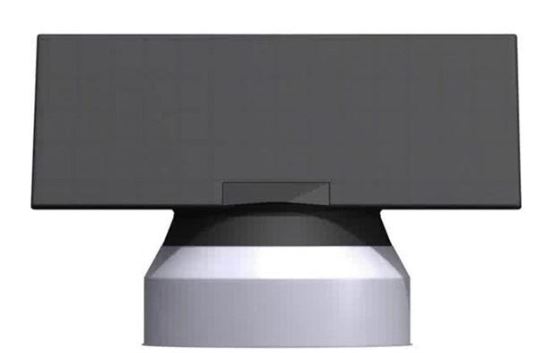
SMART-L Early Warning Capability (EWC) is a fully digitally controlled Active Electronically Scanned Array (AESA) radar. The applied high-end techniques result in a radar with an unrivalled long range performance of 2000 km. Within this enormous range it detects a wide spectrum of targets: air breathing targets, stealth targets and ballistic missiles.
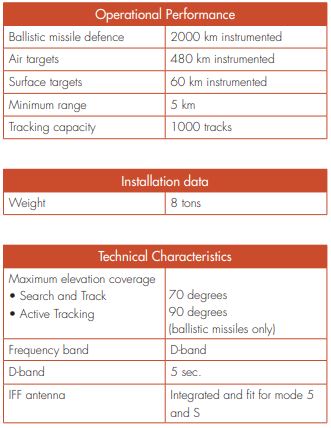
3D SURVEILLANCE RADAR
• Unrivalled long range performance
• Superior stealth target detection
• Autonomous Ballistic Missile Search and Track capabilities
• Easily upgradable
Main features
• D-band AESA technology
• Dual axis multi-beam with instantaneous mono-pulse like accuracy in azimuth and elevation
• Extended Long Range processing
• Instantaneous Doppler processing for the full range, azimuth and elevation coverage
• Proven BMD concept
• Wide elevation coverage
• Fast track initiation and active tracking
• Dedicated ECCM techniques.
• Multipath suppression using beams under the horizon
• Suitable for naval as well as ground based applications
Source: thalesgroup.com
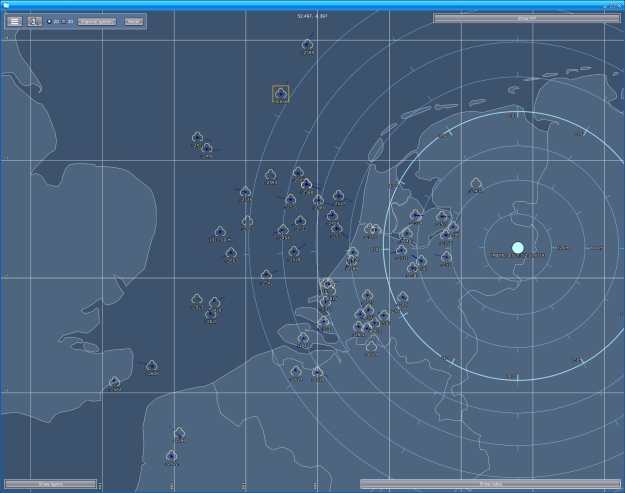
Thales
The ship’s sonar system is the Atlas Elektronik DSQS-24C hull-mounted search and attack sonar.
Atlas Elektronik DSQS-24C hull-mounted sonar
| GENERAL DATA: | |
|---|---|
| Type: Hull Sonar, Active / Passive | Max Altitude: 0 m |
| Max Range: 44.4 km | Altitude Min: 0 m |
| Min range: 0 km | Generation: Early 1990s |
| SENSORS / EW: |
|---|
| DSQS-24C [CSU 90] – Hull Sonar, Active / Passive Role: Hull Sonar, Active / Passive Search & Track Max Range: 44.4 km |
Source cmano-db.com
CODOG propulsion system and engines
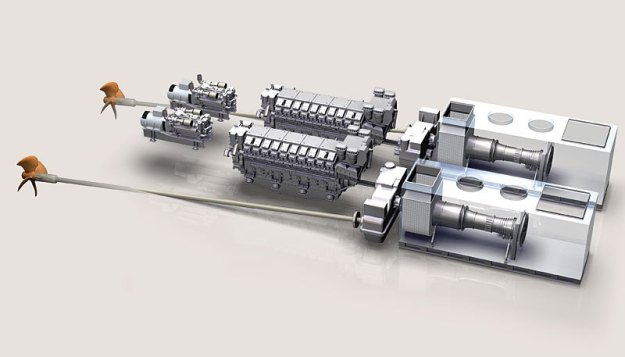
The ship’s combined diesel or gas (CODOG) propulsion system has two independent propulsion lines. The two Rolls-Royce Spey SM1C gas turbine engines each provide 18.5MW. Two cruise diesel engines, Stork-Wartsila 16 V26, provide 8.4MW.
Rolls-Royce Spey SM1C gas turbine engine
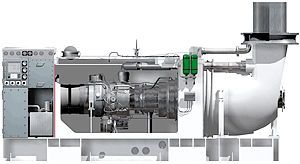
Stork-Wartsila 16 V26

wartsila.com
The two gearboxes are installed in a separate transmission room. The ship has two controllable-pitch propellers and two rudders with rudder roll stabilisation.
The maximum ship speed is 30kt and the cruise speed is 18kt. The range is 5,000 miles at 18kt.
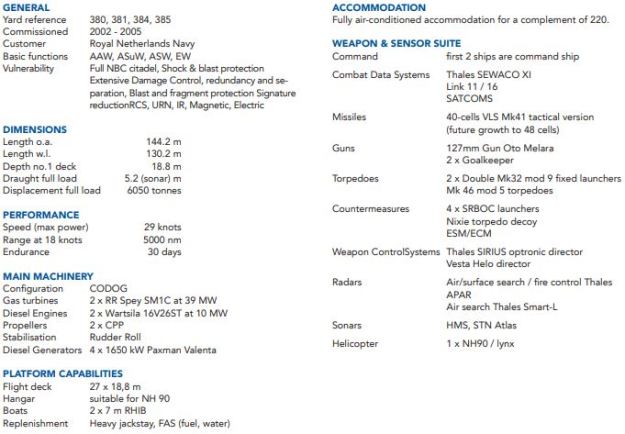
damen.com
Main material source naval-technology.com
Images are from public domain unless otherwise stated
Main image – HNLMS De Ruyter (F804) – Robert Wilson @flickr
Revised Jan 22, 2020

